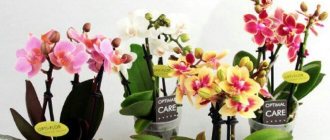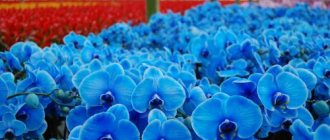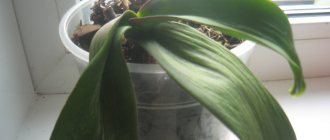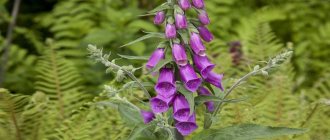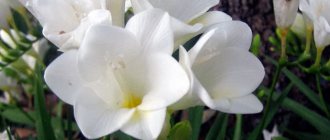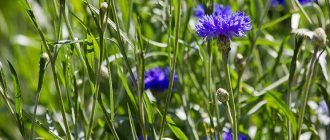The concept of Phalaenopsis (lat. Phalaenopsis) combines popular varieties of orchids that are adapted for growing at home. These delicate flowers of amazing beauty look like a butterfly.
Phalaenopsis is a slowly growing orchid that belongs to the genus of epiphytic herbaceous plants. The original color of the Phalaenopsis orchid growing in nature is white. As a result of breeding work, scientists have obtained many varieties and varieties of this plant; they differ in a wide variety of shades.
What colors are there: names and real photos
Breeders have given the world varieties of the most unimaginable colors; specimens with striped and spotted petals have appeared. Phalaenopsis belongs to the following categories based on color:
- Single color. Basically, varietal plants have the same tone. Pink, white, yellow and purple phalaenopsis are common.
- Multicolor. These include varieties with two-color petals with spots or stripes.
What are the most common phalaenopsis plants? Let's talk about popular and exotic shades and the brightest varieties of this color.
Kaleana (Caleana major) or flying duck
Kaleana is a fairly rare variety of orchids, found only in Australia . Quite modest in size, reaching a height of no more than half a meter. It looks like a flying duck and has a second corresponding name. You can see the flowering from September to January, which is quite a long time, but its life lasts only two years.
Unlike most varieties of orchids, the Flying Duck prefers soil.
In the wild, Kaleana reproduces with the help of an attractant - a substance produced by the plant that smells like the pheromones of female pollen moths. The males, having flown to the smell, find themselves trapped in the slammed petals. Covered in pollen from head to toe, they fly out of the flower and, having learned nothing, end up on another.
Pink
Pink phalaenopsis have elongated sepals with a pink color, diluted with stripes or dots of a contrasting shade. The small lip has three lobes and varies in color from pink to dark purple.
Read about pink phalaenopsis varieties here.
White
White orchids are very common. Their main feature is the snow-white color of the petals. The flower lip can be white, yellow or pink. Each bud blooms for about 3 months after opening. You will learn which varieties of white phalaenopsis are the most popular from this article.
Yellow
A distinctive feature of yellow phalaenopsis is its almost constant flowering. Their inflorescences consist of petals of yellow shades, and the color can vary from the middle to the edges. The center of the sepal may be white or pink.
Read more about yellow phalaenopsis here.
Features of care
Yellow phalaenopsis are considered not the most fastidious; they adapt quite quickly to changing environments and delight their owners with long-lasting flowering.
The main condition will be proper care of the trunk:
- Watering is carried out according to the same scheme as for other orchids. It is imperative to let the substrate in the pot dry out, but it is not advisable to dry it too much. The standard responds well to “soaking”;
- It is very good to use a hot shower for yellow phalaenopsis, this should be done only during the period of active growth, when the plant begins to bloom, such procedures should not be carried out;
- feed as standard: during the flowering period - twice a month along with watering, when the orchid is resting - one feeding per month is enough at a concentration halved;
- After purchase , you should not load the plant with fertilizers; in stores they were fed well, and sometimes too much. Continue to water and spray the phalaenopsis from a spray bottle with soft, settled water with minimal addition of fertilizing;
- Particular attention should be paid to the prevention of diseases and pests. To do this, a couple of times a month it is worth carefully inspecting the leaves and root system of the cultivated trunk. During normal development, the roots in the substrate should be green or gray-green. The slightest change in color indicates the presence of diseases or pests. If you do nothing, you can lose the entire standard. In such cases they don’t even talk about flowering.
Important! These simple rules will help you grow an exotic migrant on your windowsill and enjoy its flowering for as long as possible.
Red or burgundy
Red phalaenopsis are natural colors, have inflorescences from reddish to bright scarlet, spots or stains on them can be white, pink or burgundy. Plants with burgundy flowers can have flowers of different shades, even on the same peduncle. Their color varies from soft pink to rich burgundy.
What varieties can be found in red and burgundy colors, as well as their shades, you will learn from this article.
How to reproduce?
Kaoda reproduces in the same way as other representatives of this family:
- dividing the bush;
- basal children;
- cuttings;
- children on a peduncle;
- seeds.
The flower takes quite a long time to recover, so it is worth dividing the bush or taking a cutting not during flowering. But growing from seeds is only available to specialists. This process requires a lot of patience and certain skills. In addition, the germination rate is very low as ideal conditions are required. Even professional flower growers prefer to buy a ready-made flower in a store or propagate it in other ways.
Blue, cyan or just blue
Many blue petal orchids are standard plants with white, blue-tinted flowers. However, there is a beautiful Phalaenopsis multiflora with a dark blue lip.
Summer Rose Blue Star
The color of the petals of this phalaenopsis is uniform, without inclusions, but its shades change from soft blue to rich blue, from the edge of the petal to the center. The lip is dark blue. Due to the large number of small buds, it belongs to the Multiflora class.
Royal Blue
The Royal Blue Phalaenopsis variety has sky blue buds. The color of the lip does not differ from the shade of the petals, just depending on the lighting it may be darker than the petals. You need to know that the sky-blue color of the buds is given by the paint that is used to pre-prick the plant. The next flowering will be the usual color for this variety (for the Royal Orchid it will be white or pale pink).
What other varieties of blue phalaenopsis and other orchids can be found here.
Diseases and pests
Many Kaoda orchid owners have to face the following problems:
- Spider mite. To cope with it, hot water irrigation and acaricide are used. Fitoverm is recognized as the most harmless.
- Whiteflies, aphids and thin mites can only be removed with industrial poisons.
- Rotting due to excess moisture. It is necessary to remove traces of rot, thoroughly dry the roots and the green part of the plant. After this, the orchid should be replanted.
African sunset
There are phalaenopsis that cannot be assigned to a specific color. This is the African Sunset orchid, also known as the Karina variety. It has monochromatic petals of an unusual yellow-pink delicate color, reminiscent of a sunset. The tone of the buds can be more pink or more yellow. The monochromatic lip has small burgundy stripes. The plant grows up to 60-70 centimeters, the flowers are 8-9 cm in diameter.
Subvariety of Kaoda orchid with photo
It is worth considering in more detail the plant variety. Some scientists distinguish subspecies based on certain characteristics of the orchid.
Chocolate Drop
This is a plant that can be characterized as follows:
- average height;
- the flowers are quite large and rich, can reach 7 cm in diameter;
- no smell;
- the height of the stem is about 20 cm, the leaves completely cover it;
- The size of the leaves depends on the age of the orchid, but the maximum length is 20 cm.
Twinkle
Oddly enough, the features of this variety are the same, but it is smaller. Some scientists believe that there is only one variety - Chocolate Drobs Twinkle. Others highlight the large Chocolate Drobs and Twinkles, which are smaller in size.
There are no significant differences, and we can say that we are talking about an orchid of the same variety. Sizes depend on growing conditions.
Chocolate
Chocolate. It is named so not for its color, but for its smell. Orchid Chocolate is a hybrid; it has a pleasant confectionery aroma. Small inflorescences can be of various colors: red, red-brown, yellow and white. There may be spots of white or yellow on the lip.
Happy Alien (Calceolaria Uniflora)
Happy alien is a rather rare variety of orchids, and of course, it is unique, like all the others. Its first feature is that among its relatives this variety is a real long-liver. 100 years of life is a lot for an orchid. But that’s not all, having picked it and put it in water, you can admire the freshness of the Alien for another 3 weeks, which is also quite a lot. And its flowering at home lasts up to six months.
His appearance is clear from the name; he looks like a small alien man. In the middle there is a white lip, which has a sweetish aroma and is capable of attracting insects for pollination.
You can meet it in the wild in mountainous areas.
Multi-colored, leopard, brindle and spotted
Multi-colored orchids can be purple, white, red, yellow. But with any color, such plants are characterized by additions on the petals in the form of spots, inclusions or stripes. There may be pink splashes on a white background, purple on a lilac, red or burgundy on a yellow background.
A characteristic feature of each subspecies is the presence of a pattern.
Julia
Elegant Julia. This variety of spotted orchid is notable for its star-shaped flower, located on an ampelous peduncle. Light pink petals are decorated with splashes of burgundy or purple. The center of the inflorescence is bright burgundy. It has 5–6 peduncles 25–30 cm high, which grow wider rather than upward, and amazingly beautiful flowers 5–6 cm in diameter with a wonderful aroma.
Green World Snakeskin
Phalaenopsis of this variety is a colorful spotted Asian hybrid; on one peduncle it can have inflorescences with different patterns. On the yellow background of the petals there are cherry splashes of different sizes.
Zebra
Little Zebra. The variety of phalaenopsis called Zebra is characterized by the following features: the light pink or cream petals have longitudinal red-brown or purple stripes and dots. The lip is also white or pink with stripes resembling the color of a zebra.
Cappuccino
Cappuccino. This variety is named because the pattern on the petals of phalaenopsis resembles the milk foam that appears in a cup of coffee. Delicate lilac buds with white streaks look very romantic. Each cappuccino flower is unique.
Leopard print varieties include the spectacular varieties Cleopatra, Wild Cat and Frontera. Another bright phalaenopsis with a telling name is Parrot. You can read about it here.
Detailed description of the Kaoda variety
This type of flower is also called the Black Orchid. In nature, phalaenopsis of this color is absent. Due to the richness of the burgundy shades, one gets the impression that the flower is black.
Distinctive features of Kaod:
- The petals of the buds are opaque. On the contrary, they are dark and quite dense. They feel harsh to the touch, as if they were coated with varnish.
- The height of the stem is about 20 cm, it is not visible, since it is completely hidden by the leaves.
- The leaves are oval and dark green. They have a glossy finish. Their size can be up to 25 cm in length and about 10 cm in width.
- The peduncle appears from the leaf axil. It can branch or grow vertically. Practice shows that this variety has two peduncles that bear up to 12 open flowers.
- The flowering period lasts 3–5 months. In nature, there were cases when an orchid bloomed for up to 8 months. The size of the blossomed bud is about 4.5 cm.
- The flowers have a regular shape and rounded petals. Beet color. Sometimes there is a thin white border around the edges or small burgundy spots. The lip is white and forked at the end.
Important. The plant does not have a dormant period. It is almost always ready to bloom. Therefore, you need to create optimal conditions to get beautiful flowers that smell nice.
History of origin
There is no exact information about this, but there are several theories. Each of them has its own evidence.
Nevertheless, scientists agree on some fundamental points:
- the plant appeared in tropical Asia;
- the variety was first bred several centuries ago;
- This is a hybrid creation of breeders, since in the natural environment such a flower could not appear due to its characteristics.
Reference. There are no orchids with this color in nature. This means that when crossing crop species, it would be impossible to achieve such an amazing bud color. We can conclude that a certain gardener used other flowers for selection.
It took scientists a long time to adapt the variety to the European climate. However, it can only be bred at home. By creating the ideal environment for orchid growth, you can enjoy flowering almost all year round.
Differences from other varieties
There are few differences from other varieties. The petals of the buds are hard and opaque, and have a waxy coating on them. Interestingly, Kaod has only one variety - Chocolate Drobs Twinkle. The flowers of this hybrid have no scent at all. The plant itself is medium in size and does well indoors.
Violet
Phalaenopsis with purple buds is a hybrid species not found in nature. The color of the inflorescences varies from light lilac to deep purple, and you can also find white-lilac and dark purple colors. There are plants with petals strewn with specks of white and pink tones.
Kaoda twinkle
Kaoda Twinkle. The youngest purple orchid hybrid is Kaoda. The dark waxy petals have a dark purple, sometimes almost brown, color. The petals have a regular shape, sometimes with a white border. The lip bifurcates at the end and is white in color with purple splashes.
Violet Queen
This variety of mini phalaenopsis has an unusually delicate lilac shade of petals and a dark purple lip. The inflorescences are small in size and fragrant.
Summer Breath
A characteristic feature of this deep purple orchid is the wavy edges of two large petals. Saturation changes from a darker middle to lighter, almost white edges.
The variety Stone Rose belongs to the purple group. You will learn everything about this orchid in this article.
Prevention of various problems
To prevent orchid diseases, you need to be careful:
- If the leaves have acquired a yellowish tint, it is necessary to reduce watering, control the level of air humidity, and provide the plant with diffused lighting.
- Leaves rot when they are not cared for carefully. It is necessary to ensure that moisture does not accumulate on the green part of the phalaenopsis.
- If the air is too dry or there is no spraying, the leaf blades begin to fall off.
The Kaoda orchid is a majestic plant with dark, showy flowers. This culture will organically fit into the interior of an office or home. To prevent phalaenopsis from wilting, it cannot be left without attention. Only in comfortable conditions will Kaoda grow and bloom well.
Black
Such orchids only visually appear black. In fact, the shade closest to black is provided by special pigments, which can be dark purple, blue or violet.
Therefore, a plant that is supposedly black in color is usually dark burgundy, dark purple, and even dark blue.
Black Pearl
Black Pearl. This hybrid variety has unusually shaped flowers. In fact, the color of its buds is purple-burgundy. The lip usually comes in a lighter shade.
Black bird
Black Bird. A very rare and spectacular variety with flowers of a rich blueberry color. They have a dense glossy structure and are located on one peduncle.
Naomi
Naomi. The dark purple color of the petals looks like a large spot in the center of the inflorescence. The edges of the petals are light lilac in color.
Find out what varieties of black orchids still exist in this article.
Royal phalaenopsis orchid: how to distinguish it from an ordinary one?
Sometimes, for the purpose of fraud, the store offers us to buy a regular type of phalaenopsis instead of the hybrid Royal one. How to distinguish these two completely different trunks and pay specifically for a large-flowered hybrid:
- These two varieties can be distinguished by the size of the flower, the Royal one is much larger;
- the petals also vary, in the ordinary phalaenopsis almost all have the same size, but in the Royal one, two large ones lie on top of three smaller ones;
- the leaves are large;
- The peduncle of the Royal Phalaenopsis is thicker and higher.
The appearance of the orchid itself tells you what variety it belongs to; carefully examine the standard you are purchasing.
Orange
Orange-colored phalaenopsis have petal colors that vary from yellow to almost fiery, and sometimes there may be splashes of other colors.
Irene Dobkin
Iren Dobkin. This hybrid blooms in small bright orange inflorescences, on which there may be almost imperceptible specks of a darker tone. Its center is white, and its lip is most often yellow.
Balm
Tzu Chiang Balm. This variety of orange phalaenopsis has star-shaped flowers. The main color of the petals is soft orange, the middle and small inclusions are pink.
Phalaenopsis of the Gold group or golden ones can also be classified as orange. Read more about them here.
Green apples and others
Green Apple
The palette of shades of green orchids is extensive and varies from light green to rich salad color. The lip may have a pink, purple, white or yellow tint, depending on the variety. Common green phalaenopsis plants:
- Amalfi,
- Bellina,
- Green Apple.
Distinctive characteristics
Yellow orchids are epiphytic plants that naturally grow not on the ground, but on the trunks and rhizomes of trees and shrubs. But the roots of phalaenopsis do not grow into the wood, but wrap around its bark, feeding on moisture from its pores.
Phalaenopsis with yellow flowers can have many shades: from pale yellow, almost transparent to rich sunny colors. The core is usually brighter than the edge of the petal. Most varieties of yellow phalaenopsis have a contrasting lip color that can be white, purple, red, speckled or spotted.
Yellow orchids have the following general characteristics:
- The stem of all species is cylindrical and green. Most often its height does not exceed 50 cm.
- The leaves have an oblong or elliptical shape.
- The inflorescence consists of dense rounded petals in sunny shades. In the middle of the inflorescence there is a sepal, the shape of which can be very diverse and bizarre.
- The buds can be either one color or contain many inclusions. Many species emit a pleasant aroma.
- There can be either one or several flowers on the flower arrow, depending on the phalaenopsis variety.
- The root system is well developed.
